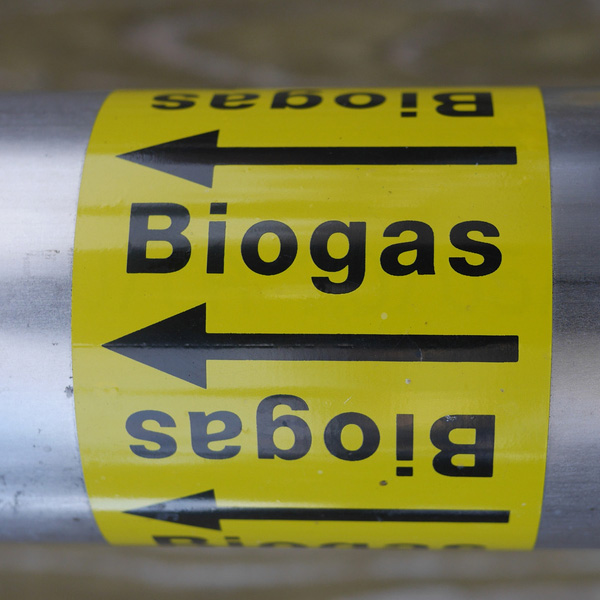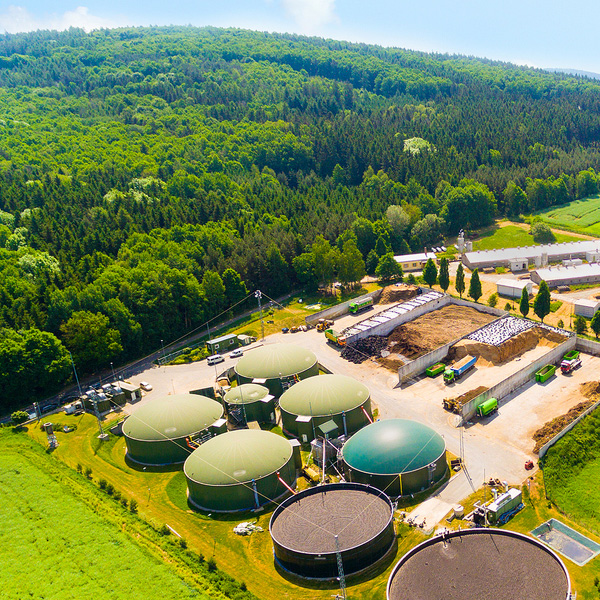Benefits of Biogas Sector MRV
Develop National Greenhouse Gas (GHG) Inventories Using Biogas Project MRV Data
Biogas sector MRV can provide a wealth of data that can be used to improve GHG emissions inventories.
GHG Inventory Methodologies for the Biogas Sector
According to the 2006 IPCC Guidelines for National Greenhouse Gas Inventories (published in 2006 and subsequently refined, most recently in 2019), there are typically three key methodological considerations for estimating emissions from a particular source:
- Availability of activity data. Activity data refer to information about processes that result in emissions or removals over a certain time period (e.g., amount of organic waste sent to a landfill).
- Availability of emissions factors. Emissions factors are values that represent a quantity of emissions per unit of activity (e.g., tons of methane emissions per ton of organic waste landfilled).
- Choice of method. The 2006 IPCC Guidelines provide three tiers of methods for estimating emissions from a particular sector:
- Tier 1 methods are based on generic models and default values (e.g., for activities and emissions factors), and generally result in higher uncertainties.
- Tier 2 methods build on Tier 1 methods, but often include country-specific data (e.g., country-specific activity data).
- Tier 3 methods use country- and facility-specific data and tailored models to produce estimates that typically have lower uncertainty.
Leveraging MRV to Employ Higher-Tier Methods and Enhance GHG Inventories
Many governments currently use Tier 1 methods for emissions categories in the biogas sector, which can often result in +/-50 percent uncertainty for biogas sector categories.
Opportunities for using data acquired through MRV to advance to higher-tier methods include:
- Refining Recovery Estimates. Governments can use data on methane recovery from biogas projects to develop nation-specific recovery rates and improve inventories, rather than using generic default values.
- Improving Activity Data. Governments can leverage biogas project MRV of emissions to develop better-informed estimates of activities that contribute emissions and practices that avoid them.
- Developing Country-Specific Emissions Factors. Governments can use MRV data to develop country-specific emissions factors for biogas sector sources.
Enhance Mitigation Targets in Nationally Determined Contributions (NDCs) using Biogas Project MRV Data
Biogas project MRV can help inform national mitigation targets in NDCs and enable national governments to better track their progress toward mitigation commitments.
What are NDCs?
NDCs outline a countries’ efforts to reduce national emissions and contribute to the achievement of the long-term goals set forth in the Paris Agreement.
The first round of NDCs were submitted in anticipation of and shortly after the adoption of the Paris Agreement in 2015. Countries are asked to update their NDCs every five years, and as of November 2021, over 150 countries have submitted a new or updated NDC.
NDCs will be reviewed as part of a global “stocktake” of efforts toward achieving global mitigation targets, the first of which will be conducted in 2023 (and every five years thereafter).
Why Include Methane Emissions Reductions in Updated NDCs?
Research indicates that without significant reductions in short-lived climate pollutants, such as methane, global temperature increases will exceed 2.0°C by 2100.
As the biogas sector is responsible for approximately 20 percent of anthropogenic methane emissions, actions in this sector can play a critical role in meeting global mitigation targets.
Approaches to Including Methane in NDCs
As governments develop their NDCs, they can consider integrating efforts to mitigate biogas methane emissions by:
- Identifying the largest sources of anthropogenic methane emissions in the biogas sector (e.g., landfills, wastewater treatment facilities, agricultural operations).
- Establishing emissions reductions goals by source category (targets can be a percentage reduction in relation to the baseline year or a specific metric ton reduction).
- Identifying specific strategies to mitigate anthropogenic methane by sector and source category (e.g., requiring methane recovery from all new landfills).
- Establishing protocols for measuring methane emissions and emissions reductions for incorporation into national communications (e.g., Biennial Transparency Reports starting no later than 2024).
- Developing a national database of emissions reductions to more easily track and link project-level data to NDC commitments.
- Indicating in their NDCs where the country is lacking the resources or capacity required to collect data to make MRV viable.
Examples of Countries that Have Included Methane Targets in Their NDCs
 Rwanda’s first NDC highlighted the need for action in the solid waste sector. This NDC described the rapid growth in waste-related methane emissions under a business-as-usual scenario. The country set a target of reducing landfill methane emissions by approximately 600,000 tonnes CO2e by 2030 and intends to institute regulations on landfill emissions and using landfill gas collection and utilization (Government of Rwanda, 2015).
Rwanda’s first NDC highlighted the need for action in the solid waste sector. This NDC described the rapid growth in waste-related methane emissions under a business-as-usual scenario. The country set a target of reducing landfill methane emissions by approximately 600,000 tonnes CO2e by 2030 and intends to institute regulations on landfill emissions and using landfill gas collection and utilization (Government of Rwanda, 2015).  Dominica’s NDC includes a goal of reducing emissions from the solid waste sector by 78.6 percent by 2030, which it will achieve by addressing methane emissions from its existing landfill, which was built in 2005. Methane generated at the landfill is currently vented, but the country proposes to reduce emissions by increasing organic waste diversion and installing a flaring system (Government of Dominica, 2015).
Dominica’s NDC includes a goal of reducing emissions from the solid waste sector by 78.6 percent by 2030, which it will achieve by addressing methane emissions from its existing landfill, which was built in 2005. Methane generated at the landfill is currently vented, but the country proposes to reduce emissions by increasing organic waste diversion and installing a flaring system (Government of Dominica, 2015).  Uruguay’s NDC presents an unconditional 57 percent reduction in methane emissions intensity per gross domestic product unit from base year 1990 by 2025, and a conditional 59 percent reduction. In the waste sector, unconditional objectives will be met through the introduction of methane capture and flaring in solid urban waste disposal systems (Government of Uruguay, 2017).
Uruguay’s NDC presents an unconditional 57 percent reduction in methane emissions intensity per gross domestic product unit from base year 1990 by 2025, and a conditional 59 percent reduction. In the waste sector, unconditional objectives will be met through the introduction of methane capture and flaring in solid urban waste disposal systems (Government of Uruguay, 2017).


